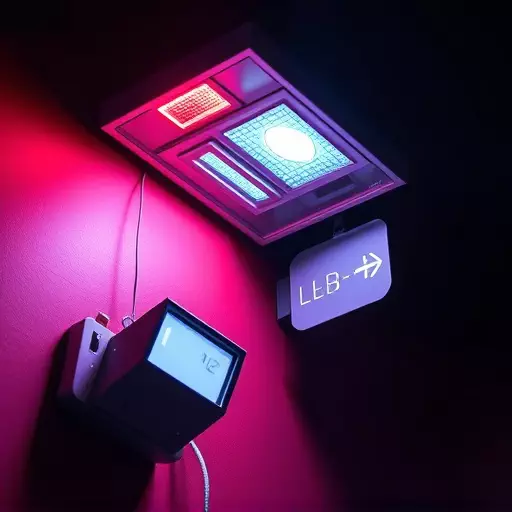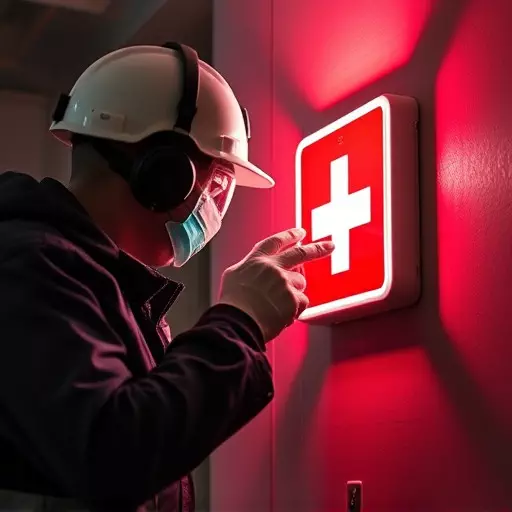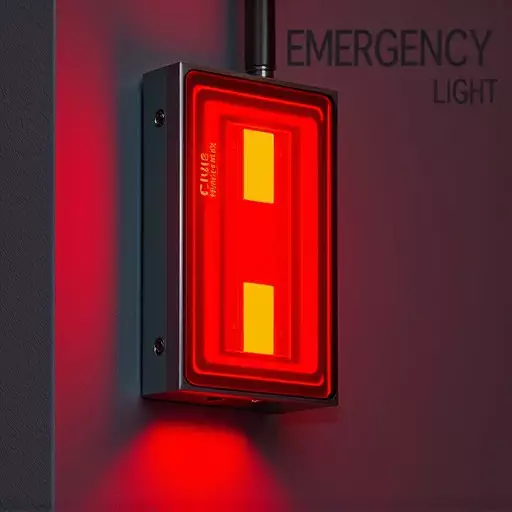Emergency light testing services are essential for maintaining safe buildings, ensuring these critical systems work during emergencies like power outages. Regular inspections involve visual checks, manual activation tests, and automated simulations to verify battery health, lamp integrity, control mechanisms, and evacuation procedures. Using specialized tools like lumens meters, simulation devices, and diagnostic tools guarantees emergency lighting meets safety standards. Professional testing identifies issues early, enhancing preparedness, compliance with fire regulations, and liability mitigation. Investing in these services is vital for maintaining safe business and public spaces.
Emergency light functionality testing is an essential component of building safety, ensuring that lighting systems perform optimally during power outages or emergencies. This comprehensive guide delves into the critical aspect of emergency light testing, covering everything from understanding its significance to the equipment used and step-by-step protocols. We explore different inspection methods, common issues, and the vital role of experts in maintaining reliable emergency lighting. Discover why regular emergency light testing services are indispensable for any facility’s safety strategy.
- Understanding Emergency Light Testing: Why It's Crucial
- Types of Emergency Light Inspection and Testing Protocols
- Equipment Used in Emergency Light Functionality Assessment
- Step-by-Step Process for Effective Emergency Light Testing
- Common Issues Found During Emergency Light Inspection
- The Role of Experts in Ensuring Reliable Emergency Lighting
- Benefits of Regular Emergency Light Testing Services
Understanding Emergency Light Testing: Why It's Crucial

Emergency light testing services are an essential component of safety protocol in any building or facility. Regular emergency light inspection and testing ensure these critical systems function optimally during unforeseen events, like power outages or emergencies. Emergency light functionality testing involves rigorous assessments to verify every aspect of the lighting system—from battery health and lamp integrity to control mechanisms and emergency operation procedures.
Understanding the importance of this process is paramount for property managers and owners. It ensures that occupants are well-lit and guided during an evacuation, significantly reducing panic and risk. Moreover, compliance with local fire safety regulations not only safeguards lives but also minimizes legal liabilities and potential insurance claims related to unsafe conditions.
Types of Emergency Light Inspection and Testing Protocols

Emergency light systems play a critical role in ensuring safety during power outages or emergencies. To maintain their effectiveness, regular inspection and testing protocols are essential. These protocols typically involve both visual inspections and functional testing to identify any defects or malfunctions. One common approach is routine manual testing, where maintenance personnel physically test each emergency light by activating them and verifying proper illumination and operation. This method ensures that the lights are working as intended and can guide folks to safety in an emergency.
In addition to manual testing, automated testing services have gained popularity. These services employ specialized equipment to simulate emergency conditions and assess the responsiveness and brightness of emergency lights. By combining visual inspections with these advanced testing methods, facilities can ensure comprehensive emergency light inspection and testing, ultimately enhancing safety measures for occupants.
Equipment Used in Emergency Light Functionality Assessment

Emergency light functionality assessment involves a comprehensive suite of equipment designed to accurately evaluate the performance and reliability of emergency lighting systems. This includes specialized meters for measuring lumens, which help determine if lights are bright enough to guide occupants safely during a power outage or evacuation. Also crucial is the use of simulation devices that replicate various failure scenarios, allowing testers to assess how the emergency lights respond to situations like battery discharge or circuit faults.
Beyond these, handheld diagnostic tools play a vital role in identifying potential issues within wiring and control panels. These devices enable detailed inspections and testing, ensuring every component functions optimally. Emergency light inspection and testing services employ these tools to verify compliance with safety standards and regulations, providing peace of mind that emergency lighting systems are ready to serve their intended purpose when needed most.
Step-by-Step Process for Effective Emergency Light Testing

To ensure maximum effectiveness during an emergency, regular emergency light testing services are paramount. The process begins with a thorough emergency light inspection and testing schedule, tailored to your facility’s specific needs. This includes visually inspecting each light for any signs of damage, corrosion, or obstruction, and verifying their proper placement and accessibility.
The next step involves simulating emergency conditions to assess emergency light functionality testing. This could include turning off the main power supply and checking if lights activate promptly via backup power sources. Additionally, testing the lumens output and overall lighting quality ensures visibility levels meet safety standards. Regular documentation of these tests is crucial for maintaining compliance with regulations and facilitating future comparisons against performance benchmarks.
Common Issues Found During Emergency Light Inspection

During emergency light inspection and testing, several common issues are often encountered. One of the primary concerns is the emergency light functionality testing which reveals defective or non-operational lights. This can be due to dead batteries, faulty wiring, or damaged fixtures, highlighting the need for regular maintenance and prompt replacement.
Another frequent issue is the emergency light inspection and testing process itself often uncovers problems with the power source, such as circuit breakers tripping or power failures. Additionally, inadequate lighting coverage in critical areas like exits and corridors may be identified. These findings underscore the importance of relying on professional emergency light testing services to ensure compliance with safety regulations and optimal emergency preparedness.
The Role of Experts in Ensuring Reliable Emergency Lighting

In the realm of safety and emergency preparedness, experts play a pivotal role in ensuring reliable emergency lighting systems. Emergency light testing services are crucial for maintaining optimal functionality during critical situations. These services encompass comprehensive emergency light inspection and testing to identify any potential issues or failures that might occur. By conducting regular assessments, professionals guarantee that these lights operate effectively when needed most, providing clear and consistent illumination to guide people safely.
Emergency light functionality testing involves rigorous procedures designed to emulate real-world scenarios. This includes simulating power outages, battery drain, and environmental conditions to assess the lights’ performance. Experts employ advanced tools and methodologies to verify every component’s integrity—from fixtures and wiring to backup batteries and control systems. Such meticulous inspection ensures that emergency lighting remains a dependable lifeline in times of crisis, offering peace of mind for building occupants and property managers alike.
Benefits of Regular Emergency Light Testing Services

Regular emergency light testing services are a critical component of any comprehensive safety program for businesses and public spaces. By conducting routine emergency light inspection and testing, facilities can ensure that their emergency lighting systems function optimally during a power outage or other emergency situations. This proactive approach to emergency light functionality testing offers numerous benefits, including improved safety for occupants, reduced risk of liability, and enhanced credibility in adhering to local building codes and regulations.
Moreover, regular testing helps identify potential issues such as faulty bulbs, broken wiring, or outdated batteries before they become critical failures. Well-maintained emergency lighting systems not only provide clear exit guidance but also contribute to a swift evacuation process, potentially saving lives and minimizing property damage. Therefore, investing in professional emergency light testing services is not just a compliance requirement but a responsible step towards creating safer environments for all.


